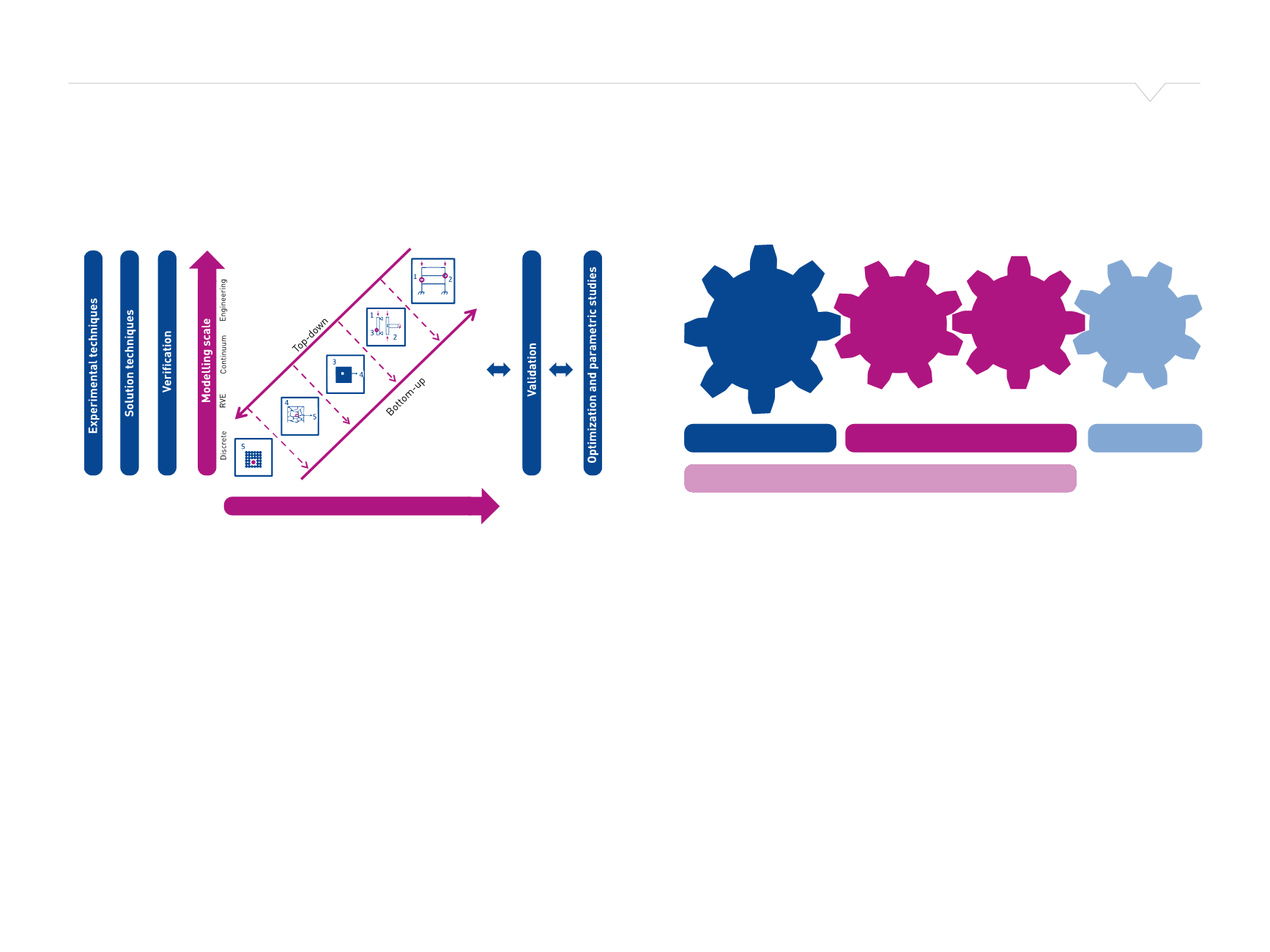

7
reSearch methOdOlOGy aNd INduStrIal ImPlemeNtatION
nm
Atomic
scale
Microstructure
Material
Component
Joint
Structure
System
µm mm cm m
Physical scale
Figure 1: Research methodology
Figure 2: Structure of research
Multi-scale
testing,
modelling and
simulation
Methods
&
Tools
Industrial
implementation Innovation
Basic research
SFI-CASA
Technology transfer
Industry
Research methodology and industrial implementation
The activities in CASA will represent a step change for advanced
structural analysis for industry and public enterprises as it is
based on multi- and interdisciplinary research on different
physical scales. The research methodology adopted to meet
the overall objective is presented in Figure 1. As illustrated, a
structure or product can be studied on different physical scales
just like the modelling scales (there is also a time scale which
reflects the duration of the physical events to be studied, but
this is not shown in the figure). By using a top-down/bottom-
up approach the main goal of the research will always be the
final structure or product. In some cases, microstructural
modelling or even modelling on atomic scale may be required
to understand the underlying physical mechanisms of the
observed material response to loading, whereas for joints or
components the behaviour may be sufficiently well understood
on the continuum scale. In all cases, research at the Centre
will be designed to obtain modelling frameworks on the
material and structural levels that are suitable for industrial
applications. Many research topics and activities are addressed
on the various scales: testing and modelling of materials and
structures, numerical solution techniques, experimental
techniques, verification and validation approaches, and
optimization methods and parametric studies. Verification
is the process of determining that a computational model
accurately represents the underlying mathematical model
and solution, whereas validation deals with the relationship
between the computational model and the physical reality.
Figure 2 illustrates the important interlink between Basic
research, Technology transfer and Industry. The Methods
& Tools programme is a synthesis of Basic research, where
guidelines and recommended practice for credible numerical
structural analysis will be established. The Industrial
implementation programme will be the link between the
Methods & Tools programme and the industrial use of
the research and technology developed at the Centre for
Innovation.


















